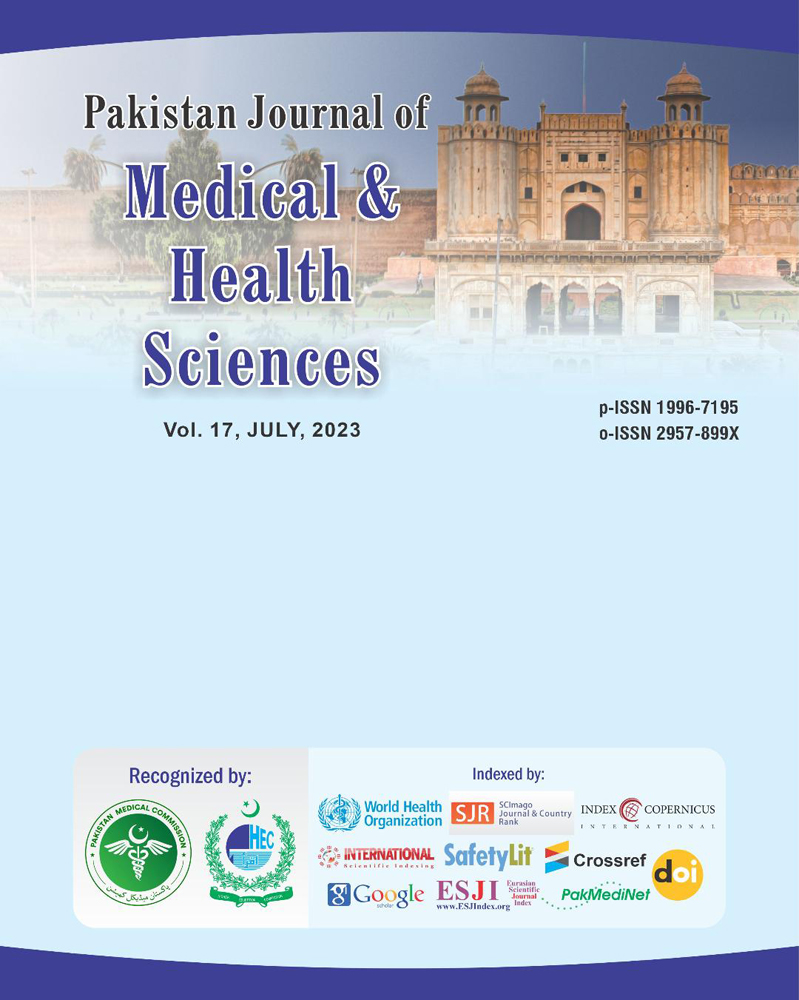Assessment of Morphological Differences in Pelvic Bones among Adult Males and Females, A Gross Anatomical Study
DOI:
https://doi.org/10.53350/pjmhs202317763Abstract
Background: The human pelvic bone is the most sexually dimorphic structure in the skeleton, and it plays an essential role in locomotion, reproduction, and forensic identification. Nevertheless, little is known about the Pakistani population with regard to anatomical characteristics. The purpose of this study is to investigate gross anatomical differences in pelvic bones in the adult males and females.
Methods: The skeletal collection of two Pakistani hospitals was subjected to examination of a total of n=60 dry adult pelvic bones (30 males and 30 females). Measurements of standard anatomical tools were made of subpubic angle and ischiopubic index. Visually, the shape of the pelvic inlet and sciatic notch width were assessed. The data were analyzed using SPSS version 25.0. Independent sample t-tests and Chi-square tests were applied, where p < 0.05 was taken to be statistically significant.
Results: The mean subpubic angle was 82.6° ± 4.1° in females and 68.2° ± 3.5° in males (p < 0.001). In addition, females (97.4 ± 6.5) had significantly higher ischiopubic index than males (78.5 ± 5.2) (p < 0.001). In most cases, male pelvises showed heart-shaped inlets (83.3%) and narrow sciatic notches (86.7%), while female pelvises had circular inlets (90%) and wide sciatic notches (80%) (p < 0.001 for both).
Conclusion: The study's results confirm the distinct sexual dimorphism in the adult pelvic bones of the Pakistani population. The findings are critical for anatomical education, forensic anthropology, and clinical practice, giving critical anatomical benchmarks.
Keywords: Pelvis, Sexual dimorphism, Subpubic angle, Ischiopubic index, Forensic anthropology, Gross anatomy, Pakistan
Downloads
How to Cite
Issue
Section
License
Copyright (c) 2023 Asma Zulfiqar, Muhammad Umar, Piriha Abbasi, Sitwat Amna, Muhammad Faisal Khan, Nimrah Fahim

This work is licensed under a Creative Commons Attribution 4.0 International License.


